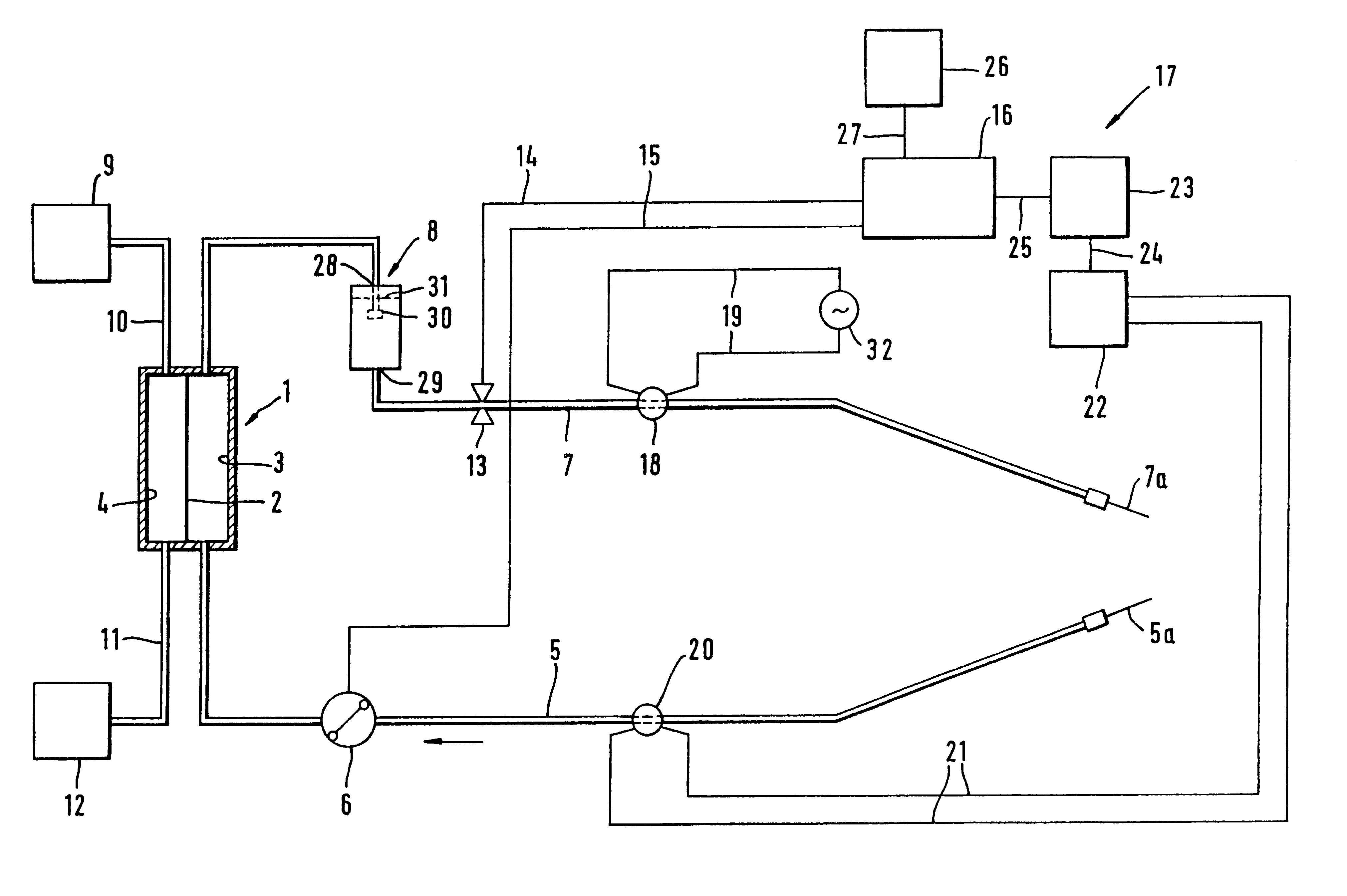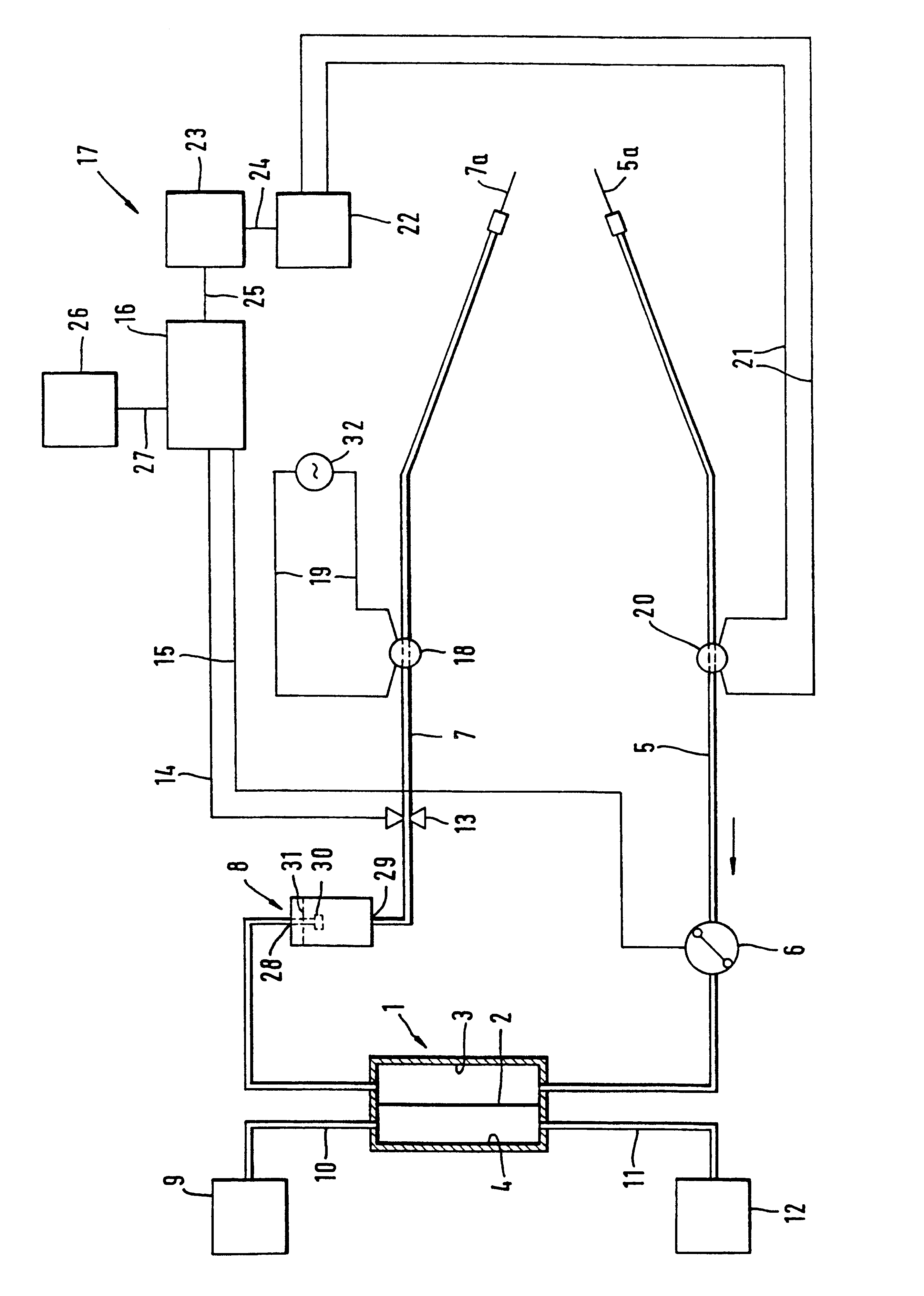Method and device for monitoring vessel access during extracorporeal blood treatment
a technology of extracorporeal blood and monitoring device, which is applied in the direction of flow monitors, medical devices, water/sludge/sewage treatment, etc., can solve the problems of defective vascular access detection, no longer being used, and patients suffering major blood loss
- Summary
- Abstract
- Description
- Claims
- Application Information
AI Technical Summary
Benefits of technology
Problems solved by technology
Method used
Image
Examples
Embodiment Construction
The dialysis machine shown in the drawing has as the blood treatment device a dialyzer 1, which is subdivided by a semipermeable membrane 2 into a blood chamber 3 and a dialysis fluid chamber 4. An arterial blood line 5 is connected to the inlet of the blood chamber and to a peristaltic blood pump 6. Downstream from blood chamber 3, a venous blood line 7 leads from the outlet of the blood chamber to the patient. An air bubble separating device 8 is connected to venous blood line 7. Needles 5a, 7a which are inserted into the patient are connected to the ends of arterial and venous blood lines 5, 7. The arterial and venous blood lines can be part of a tubing system designed as a disposable pack.
Fresh dialysis fluid is prepared in a dialysis fluid source 9. A dialysis fluid supply line 10 leads from dialysis fluid source 9 to the inlet of dialysis fluid chamber 4 of dialyzer 1, while a dialysis fluid outlet line 11 leads from the outlet of dialysis fluid chamber to a drain 12.
The dialy...
PUM
 Login to View More
Login to View More Abstract
Description
Claims
Application Information
 Login to View More
Login to View More - R&D
- Intellectual Property
- Life Sciences
- Materials
- Tech Scout
- Unparalleled Data Quality
- Higher Quality Content
- 60% Fewer Hallucinations
Browse by: Latest US Patents, China's latest patents, Technical Efficacy Thesaurus, Application Domain, Technology Topic, Popular Technical Reports.
© 2025 PatSnap. All rights reserved.Legal|Privacy policy|Modern Slavery Act Transparency Statement|Sitemap|About US| Contact US: help@patsnap.com


